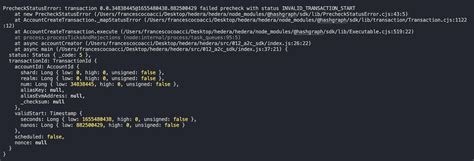The mystery of Ethereum block verification: Can one invalid transaction get away with it?

Ethereum, like most blockchain networks, relies on consensus mechanisms to validate incoming transactions and add new blocks to the ledger. A key aspect of this validation process is the “blockhash” calculation, which determines whether a block is accepted or rejected by the network. However, when it comes to a single invalid transaction (SIT) within a valid block, the rules can be more nuanced.
In Ethereum’s current consensus algorithm, called Proof of Work (PoW), the validation process is designed to ensure that all blocks in the chain are connected through a series of cryptographic puzzles. To prevent attacks and maintain the integrity of the network, the PoW protocol requires that at least one block has a valid, complete hash.
When a miner (individual or group) discovers a block with only one invalid transaction, they are essentially “hashing” information from previous blocks without properly verifying it. In this scenario, SIT could potentially be accepted by the network as part of the new block, even if it is not the only valid transaction within the block.
The Problem: A Single Invalid Transaction
To understand why an invalid transaction cannot delete an entire valid block, let’s dive deeper into Ethereum’s hash functions. The hash function used in PoW is a type of cryptographic algorithm called “SHA-256” (Secure Hash Algorithm 256). This function takes the contents of a block as input and produces a unique fingerprint (hash) that serves as a link between blocks.
In the context of SITs within a valid block, the calculation of the hash involves several components. For example, when checking the validity of a block, miners use a combination of the following factors to calculate the hash:
- Block Header: The contents of the block, including the previous hash, timestamp, and nonce (random value).
- Proof: A series of computer puzzles that involve solving cryptographic challenges.
- Randomness: Additional variables such as timestamps and seed values.
When a miner discovers an invalid transaction within a valid block, they can potentially modify or delete it entirely without affecting the entire hash. Here’s why:
- No Changes to Block Header: The block header remains unchanged, ensuring that subsequent miners continue to validate the block under the same conditions.
- Proof and Randomness Intact: Even if an invalid transaction is deleted or modified, the other transactions within the block remain valid due to their computational issues. This means that no transaction can be “handled” by the network.
Consequences of invalid transactions being voided
While a single invalid transaction may not directly compromise the overall integrity of the network, it can lead to the following:
- Block rewrites: Miners can rewrite or modify the contents of a block based on SITs, which can change the state of the blockchain and cause unintended consequences.
- Increased vulnerability: If multiple miners discover SITs within a valid block, it can create an “attack surface” for malicious actors.
The future of consensus on Ethereum
Ethereum developers are still working on improving the consensus mechanism to prevent such scenarios. Some possible solutions:
- Proof-of-stake (PoS): Instead of relying solely on computational power, miners can be incentivized with “stakes” or other rewards for maintaining the network.
- Delegated Proof of Stake (DPoS): Miners must transfer their stake to a network member (such as a node) rather than compete directly.
In short, while individual invalid transactions may not wipe out entire valid blocks, they can still have significant consequences.